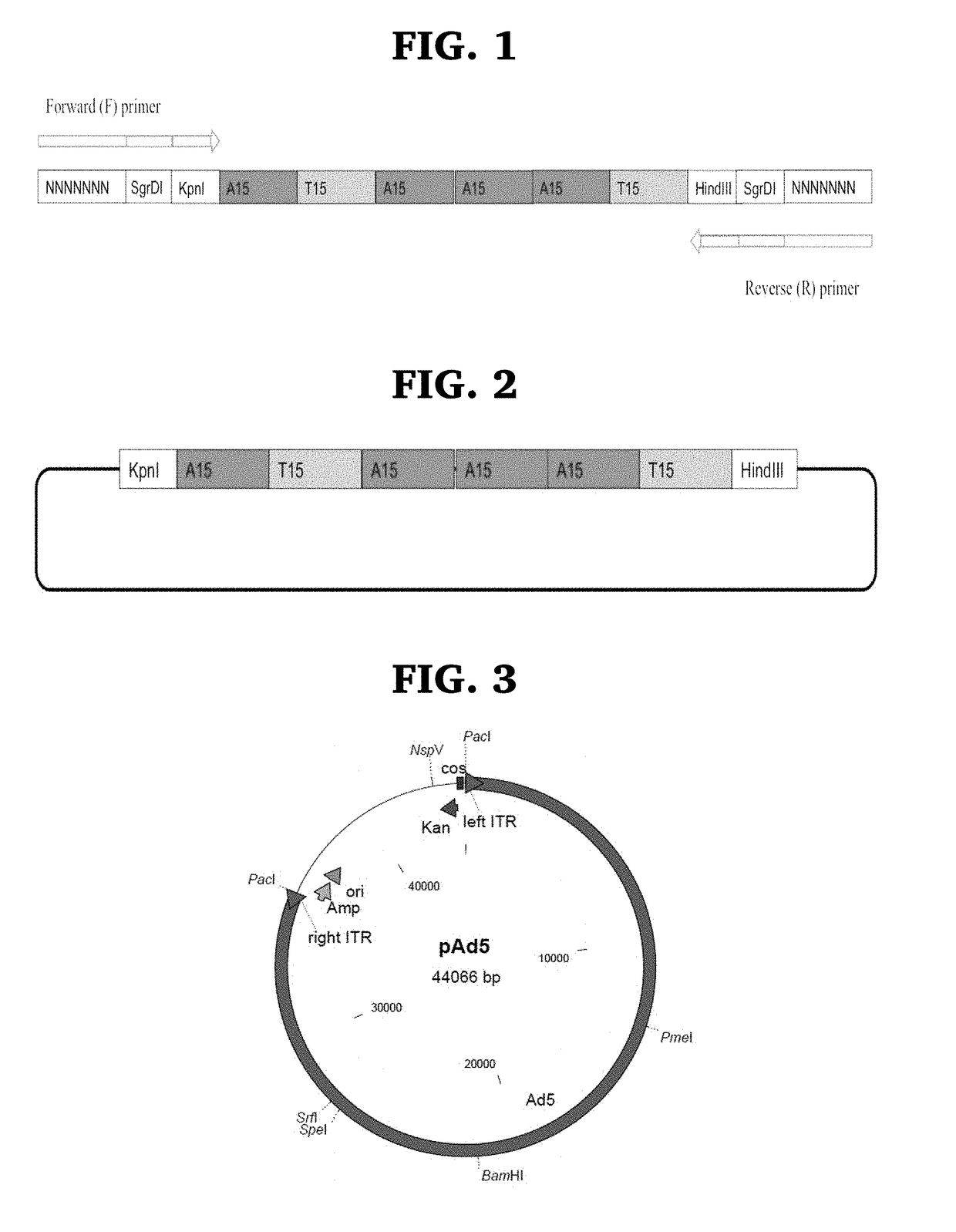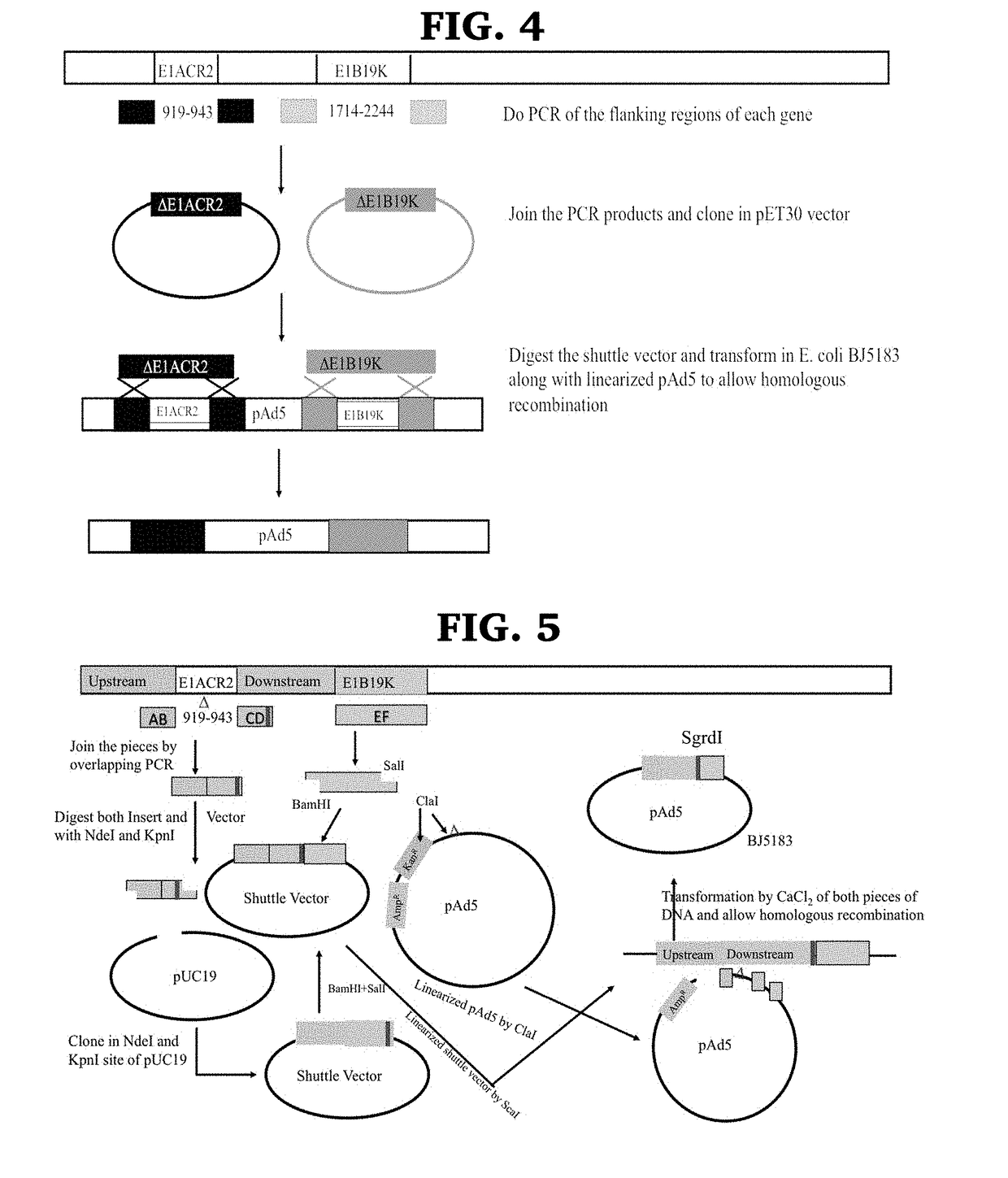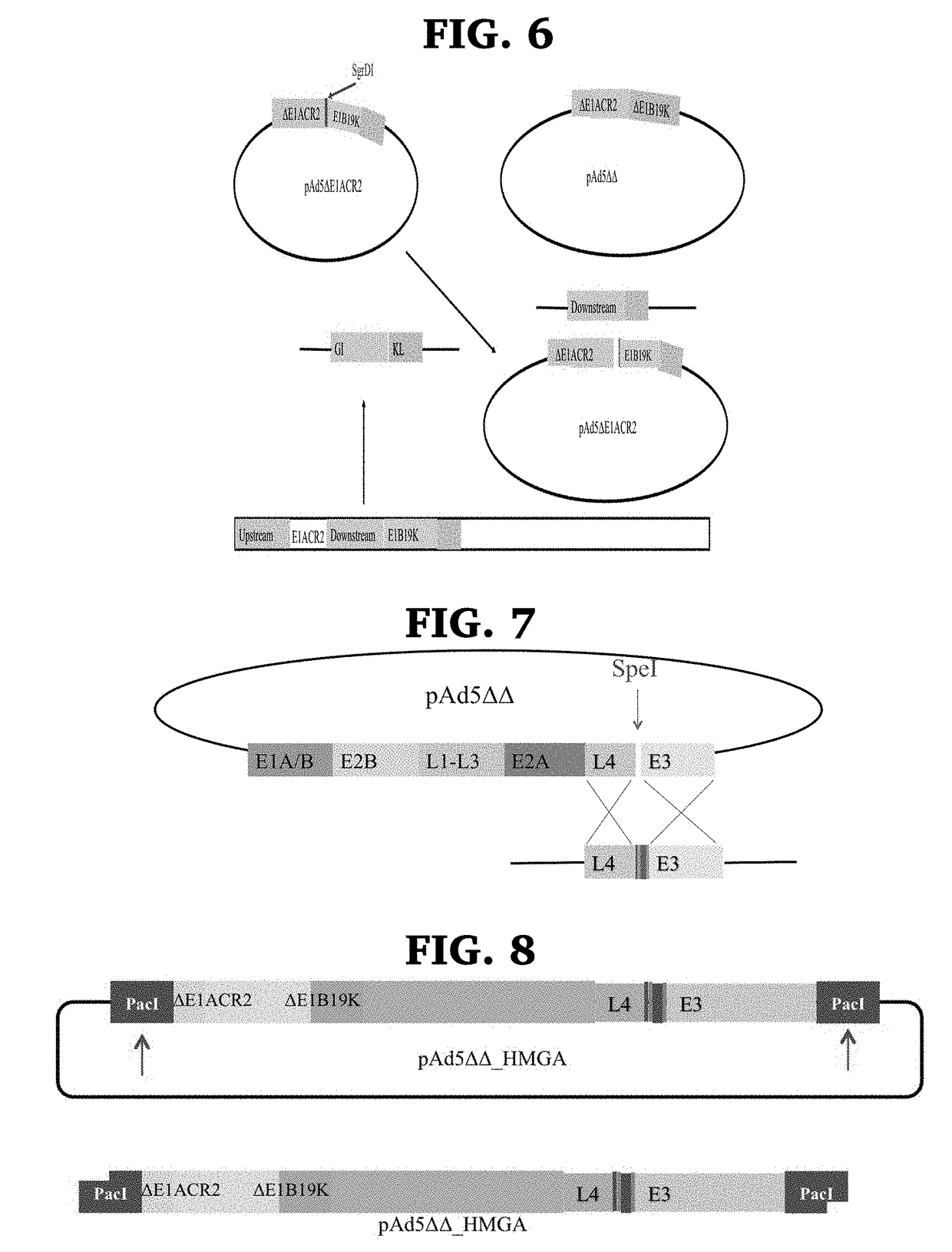Engineered oncolytic viruses containing hyper-binding sites to sequester and suppress activity of oncogenic transcription factors as a novel treatment for human cancer
a technology oncolytic viruses, which is applied in the field of engineering oncolytic viruses containing hyper-binding sites to sequester and suppress the activity of oncogenic transcription factors as a novel treatment for human cancer, can solve the problems of limited aptamers that can be transfected into a particular cancer, limited aptamers that can be delivered specifically to cancer cells in a real tumor environment, and high toxicity of drugs in humans. , to achieve the effect o
- Summary
- Abstract
- Description
- Claims
- Application Information
AI Technical Summary
Benefits of technology
Problems solved by technology
Method used
Image
Examples
example 1
[0119]Human MIA PaCa2 cells, derived from a tumor of the pancreas from a 65-year old Caucasian male, were obtained from the American Type Culture Collection (ATCC) https: / / www.atcc.org. 3×103 MIA PaCa2 cells were seeded in a 96 well plate and grown at 37° C. for 24 hours before infection. The cells were treated / infected with a replication defective adeno virus (AdEz) viruses at different doses (0.33 particles per cell (ppc), 3.3 ppc, or 33 ppc), an AdEz virus carrying six HMGA binding sites (HMGA-6) at different doses (0.33 ppc, 3.3 ppc, or 33 ppc), or Gemcitabine (GEM) at doses of 1 nM, 10 nM, and 100 nM, with some wells being left untreated as a control. After 72 hours the post treatment cell viability for each was assessed. The results are shown in FIG. 17. At the far left in the figure in column 1, the bar indicates the number of MiaPaCa-2 cells after 72 hours when the cells are left untreated. AdEz virus (columns 2-4) does not have a significant effect on the cell viability com...
example 2
[0120]Human AsPc-1 cells, derived from the ascites of a patient with cancer of the pancreas from a 62-year old Caucasian female, were obtained from the American Type Culture Collection (ATCC) https: / / www.atcc.org. 3×103 AsPc-1 cells were seeded in a 96 well plate and grown at 37° C. for 24 hours before infection. The cells were treated / infected with a replication defective adeno virus (AdEz) viruses at different doses (0.33 particles per cell (ppc), 3.3 ppc, or 33 ppc), an AdEz virus carrying six HMGA binding sites (HMGA-6) at different doses (0.33 ppc, 3.3 ppc, or 33 ppc), or Gemcitabine (GEM) at doses of 1 nM, 10 nM, and 100 nM, with some wells being left untreated as a control. After 72 hours the post treatment cell viability for each was assessed. The results are shown in FIG. 18. At the far left in the figure in column 1, the bar indicates the number of AsPC-1 cells after 72 hours when the cells are left untreated. AdEz virus (columns 2-4) does not have a significant effect on ...
example 3
[0121]Human PANC-1 cells, derived from the epitheloid carcinoma of a patient with cancer of the pancreas from a 56-year old Caucasian male, were obtained from the American Type Culture Collection (ATCC) https: / / www.atcc.org. 3×103 PANC-1 cells were seeded in a 96 well plate and grown at 37° C. for 24 hours before infection. The cells were treated / infected with a replication defective adeno virus (AdEz) viruses at different doses (0.33 particles per cell (ppc), 3.3 ppc, or 33 ppc), an AdEz virus carrying six HMGA binding sites (HMGA-6) at different doses (0.33 ppc, 3.3 ppc, or 33 ppc), or Gemcitabine (GEM) at doses of 1 nM, 10 nM, and 100 nM, with some wells being left untreated as a control. After 72 hours the post treatment cell viability for each was assessed. The results are shown in FIG. 19. At the far left in the figure in column 1, the bar indicates the number of PANC-1 cells after 72 hours when the cells are left untreated. AdEz virus (columns 2-4) does not have a significant...
PUM
| Property | Measurement | Unit |
|---|---|---|
| length | aaaaa | aaaaa |
| size | aaaaa | aaaaa |
| chemotherapy resistance | aaaaa | aaaaa |
Abstract
Description
Claims
Application Information
 Login to View More
Login to View More - R&D
- Intellectual Property
- Life Sciences
- Materials
- Tech Scout
- Unparalleled Data Quality
- Higher Quality Content
- 60% Fewer Hallucinations
Browse by: Latest US Patents, China's latest patents, Technical Efficacy Thesaurus, Application Domain, Technology Topic, Popular Technical Reports.
© 2025 PatSnap. All rights reserved.Legal|Privacy policy|Modern Slavery Act Transparency Statement|Sitemap|About US| Contact US: help@patsnap.com



